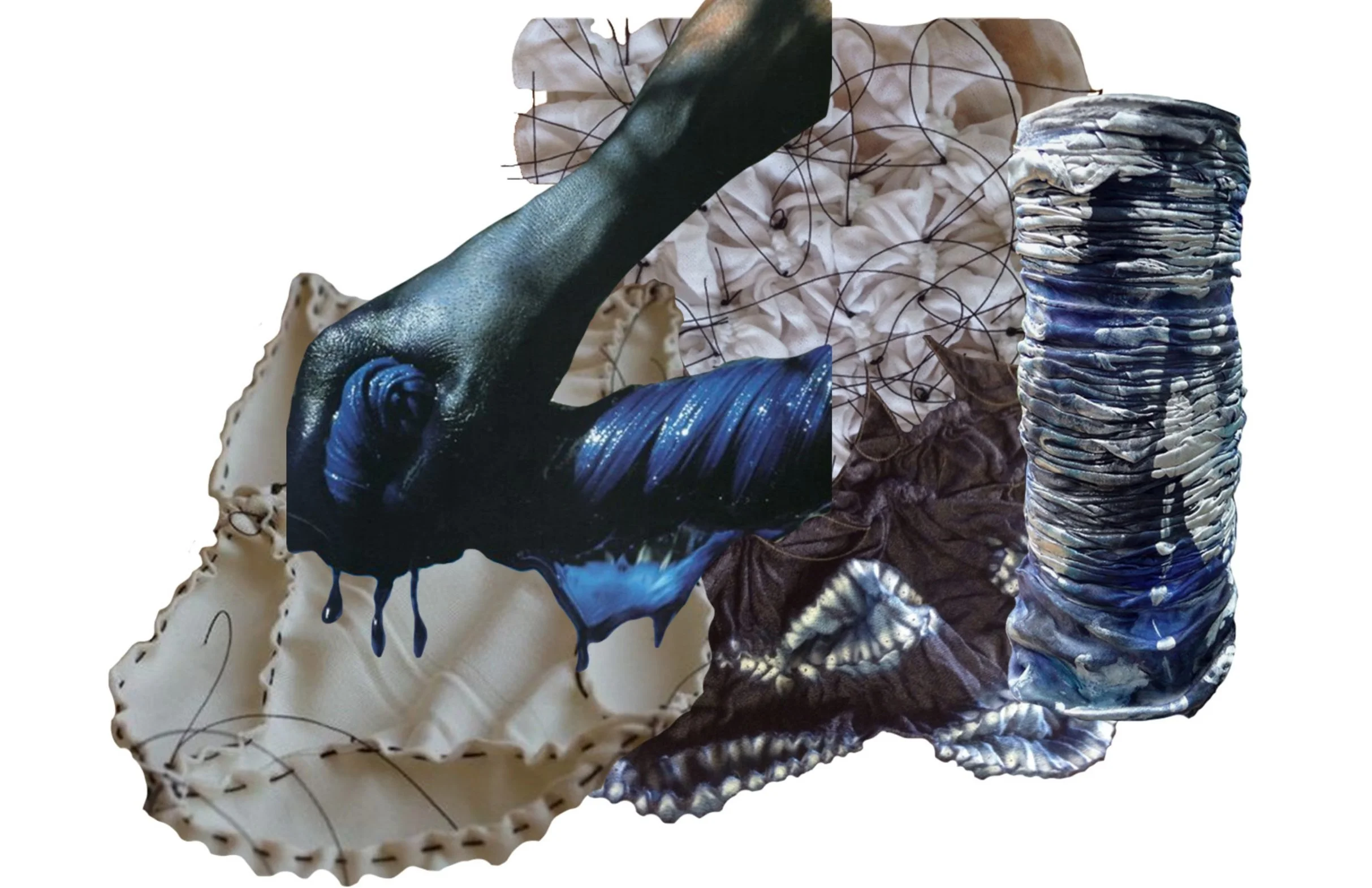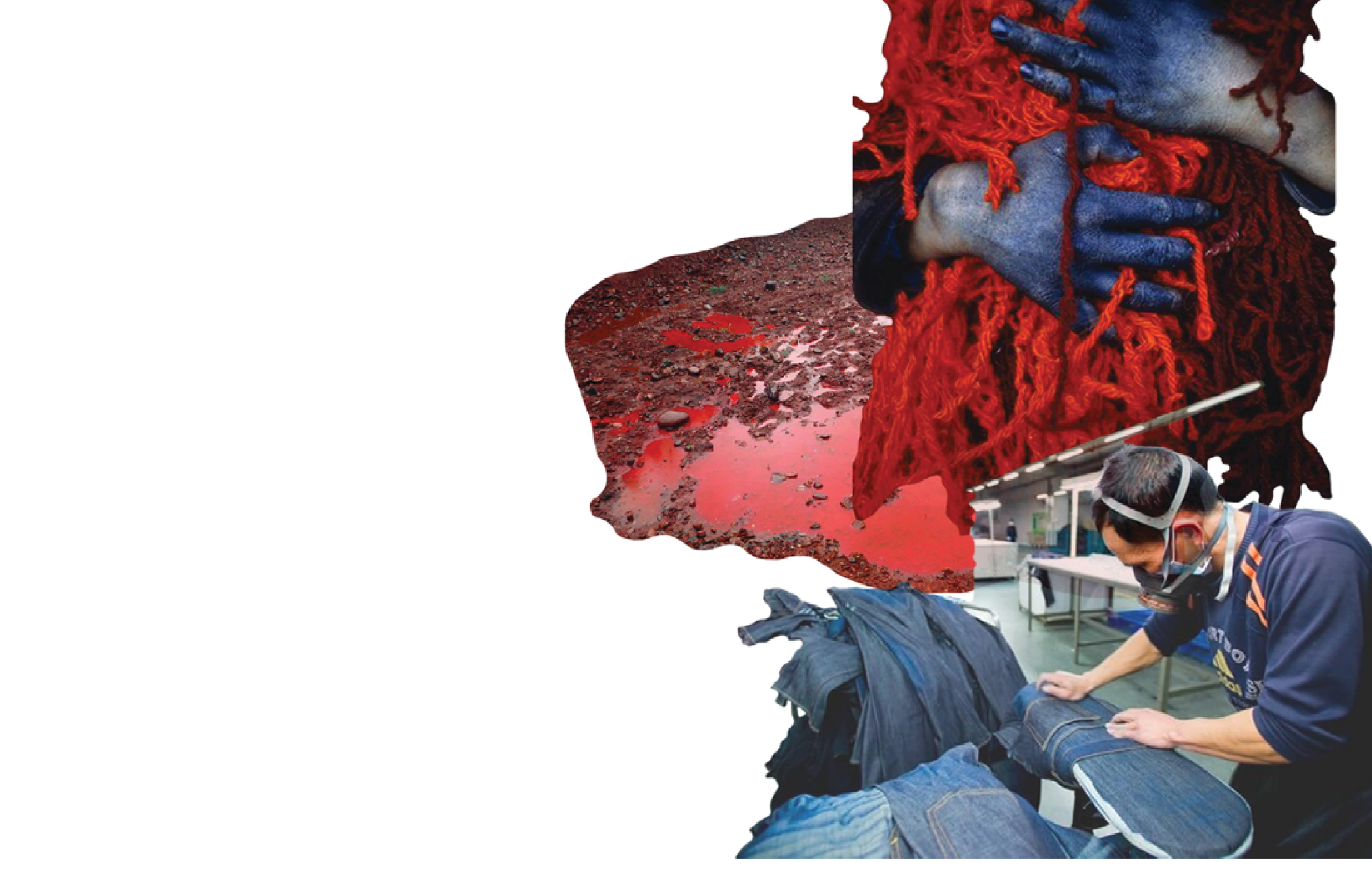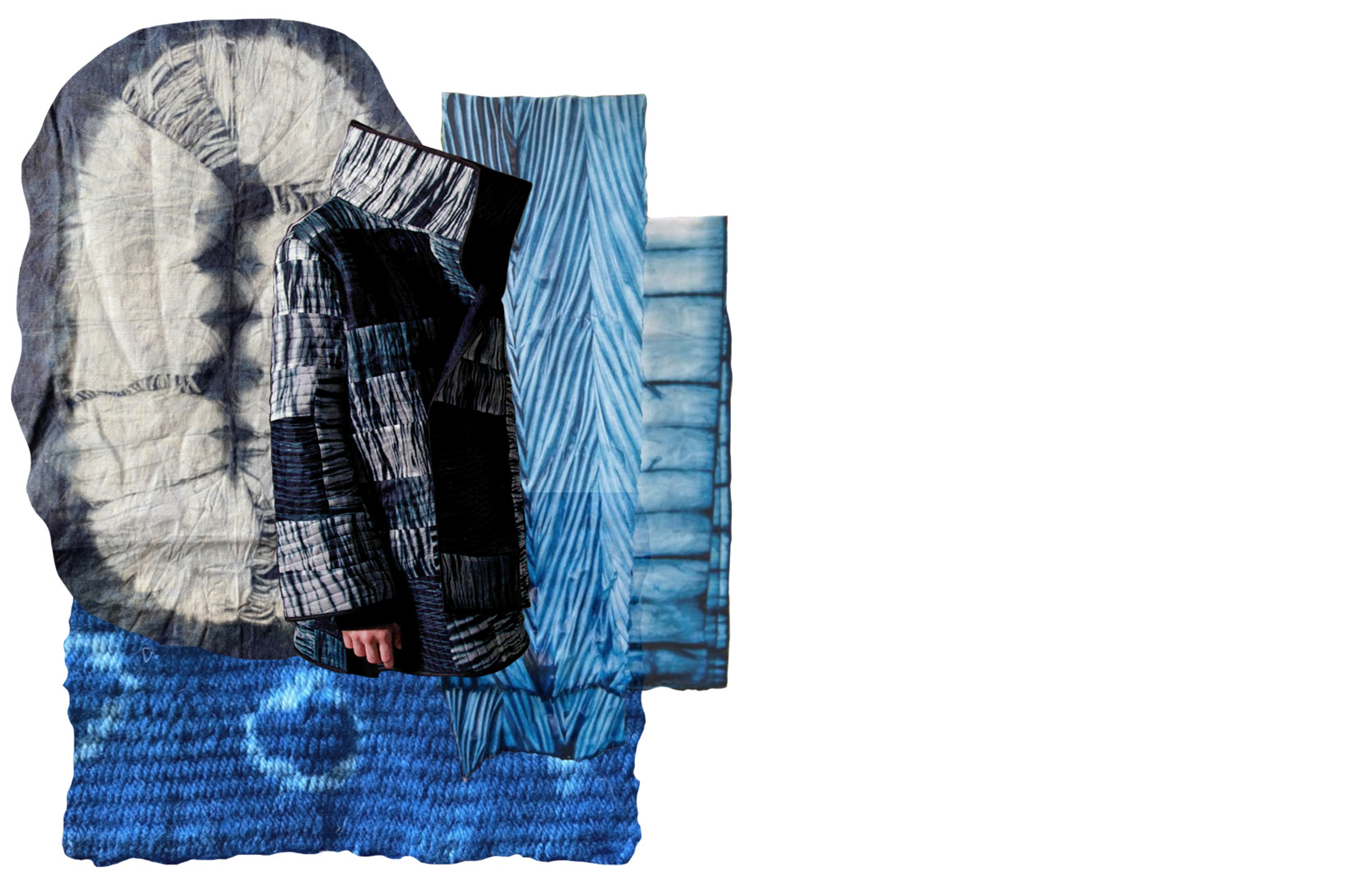Unearthed
This is an artisanal womenswear collection dedicated to revitalizing traditional, earth-based, and circular practices that will positively affect social change. My designs and prints will be produced at a small scale and will be handcrafted locally. The natural dyeing processes used will not contribute to river runoff pollution and will assist in the education of regenerating natural dyeing practices, and how naturally dyed fabrics are made
Focusing on unifying and reviving these natural dyeing processes will not only pay homage to sustainable practices that are soon to be obsolete, but also replace chemical-filled synthetic dye processes. It will highlight the importance of slow fashion, garments that are crafted with a purpose, and meant to ensure durability and promote social empowerment.
The initial research of this capstone was vital to understand the
importance of natural dyeing practices. Learning about what is
happening to our oceans, rivers, and civilians living in areas with
large scale dye factories will create a lasting impact on the user, and
inform those who are unaware.
The sustainable practices of natural dyeing have been practiced for
centuries and are a form of zero-waste and zero-pollution dyeing techniques. Natural dyeing doesn’t produce toxic runoff or waste, and these techniques allow for artisans to portray their communities’ beliefs and traditions. After the introduction of synthetic dyes in 1856, the dyeing practices that have taken decades to perfect have slowly been replaced with a faster, less costly method of dyeing fabrics. Hundreds of traditional dye vats and pits in places such as Kofar Mata, a dyeing guild in existence since 1498 in West Africa, are now filled with trash and have been out of use for years.
Modernity has taken precedence over tradition. The art of natural dyeing and creating patterns through dyeing has been lost due to the ease and low cost of synthetic dyeing. The art of natural dyeing practiced in communities in West Africa, Japan and India produce beautiful, hand-crafted designs. The artisans are oftentimes women, bringing in a social empowerment aspect, as the natural dyeing of fabrics gives women in third-world countries an opportunity to provide for their families, and is a manifestation of women’s power.
Women, especially those in India, are the managers of the home industry of making naturally dyed hand-woven fabrics. With women at the forefront of this job position, they are a leader in a powerful position within their community and pass on their skills to the next generation.
My capstone connects with the social empowerment of workers within that industry, but also unites with the sustainable aspect of natural dyeing and its positive impact on the earth and the fashion industry.
Agents such as chromium, carcinogens, microplastics, and arsenic are found in rivers surrounding the dyeing factories in Asia. These agents are known to cause cancers included liver, gastrointestinal, and bladder. It is also known that dumping dyes into water bodies decreases the passage of sunlight, increases biochemical and chemical oxygen demand, prevents
photosynthesis, and inhibits plant growth.
Most of the chemical filled runoff water is returned to
nature as toxic waste, containing dyes and hazardous
chemicals. Wastewater disposal is seldom regulated,
adhered to, or policed, meaning big brands, and the factory
owners themselves are left unaccountable. Post-production
water containing residual dye, mordants, chemicals, and
micro-fibers is expelled into water streams untreated. This is
frequently through pipes untraceable back to source, meaning factories can commit this offense anonymously. These hazardous chemicals do not break down as they enter rivers then oceans, making their way around the world.
The consumer is one that cares about their impact on the earth. By choosing to invest in clothing that was created ethically, they are decreasing their CO2 consumption and not contributing to the fast fashion industry.
To start the reverse of the damage done on the earth to date, it’s important to start making sustainable consumption choices now. By purchasing clothing that is ethical and doesn’t leave a harsh footprint on the earth, consumers are withholding funding from dangerous factories attached to fast fashion. Morally purchased clothing goes far beyond just a purchase.
After natural dyeing, the colors produced fade easily, potentially leading to shorter garment life. These ever-changing hues are arguably part of their beauty. Consumers are understanding this more and more as designers seek to present accurate information about their production process. By putting more money, time, and effort into the clothing you purchase, you are helping the earth breath easier.
Process Work
I pulled all of my final design silhouettes from my draping experiments. Using the whole rectangular piece of fabric I sourced, I produced 3 final designs that utilize the body in its natural form and accentuate the body’s natural silhouette. In turn, I also used zero fabric waste while creating my final designs.
eco printing process
henna dyeing
making process
initial draping ideations
sewing process
tied resist pattern creation
logwood dyeing
waistband creation
stitch resist pattern creation
construction of garment
construction of garment


























